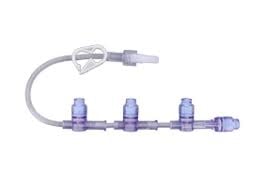- Community
-
Programs
- Schools
-
Careers
- RN Specialties
- Best RN Jobs and Salaries
- Aesthetic Nurse
- Nursing Informatics
- Nurse Case Manager
- NICU Nurse
- Forensic Nurse
- Labor and Delivery Nurse
- Psychiatric Nurse
- Pediatric Nurse
- Travel Nurse
- Telemetry Nurse
- Dermatology Nurse
- Nurse Practitioner
- Best NP Jobs and Salaries
- Family NP (FNP)
- Pediatric NP
- Neonatal NP
- Oncology NP
- Acute Care NP
- Aesthetic NP
- Women's Health NP
- Adult-Gerontology NP
- Orthopedic NP
- Emergency NP
- Psychiatric-Mental Health NP (PMHNP)
- APRN
- Nurse Educator
- Nurse Administrator
- Certified Nurse Midwife (CNM)
- Clinical Nurse Specialist (CNS)
- Certified Registered Nurse Anesthetist (CRNA)
- Resources
- Education



Nursing Au
73 Posts
If one patient only has one IV access site, and is on one unit of blood transfusion such as PRBC which will finish after 15 minutes, and at the same time if a doctor prescribes Lasix IV STAT, there would be two options to give Lasix IV STAT:
1. Do IV cannulation to open a new IV access, in order to give Lasix IV STAT. The procedure of IV cannualtion perhaps will spend ten minutes. Although it is an invasive procedure, Lasix IV can be given 5 minutes earlier before the blood transfusion finishes.
2. Wait 15 minutes for the blood transfusion to finish. After 15 minutes, flush and use the same IV access site to give Lasix. However, it is not given as STAT, as 15 minutes passed.
Both options have own advantage and disadvantage.
Which option is the best one?